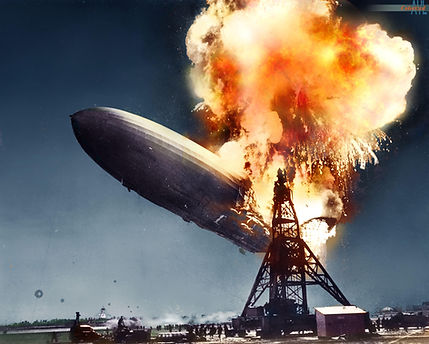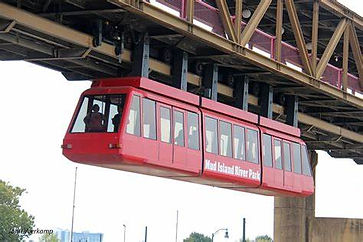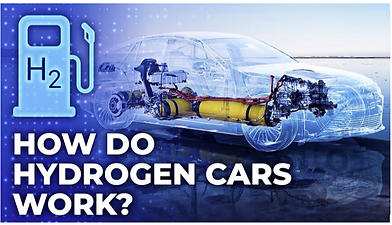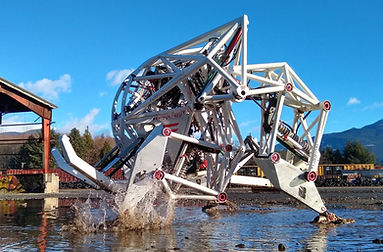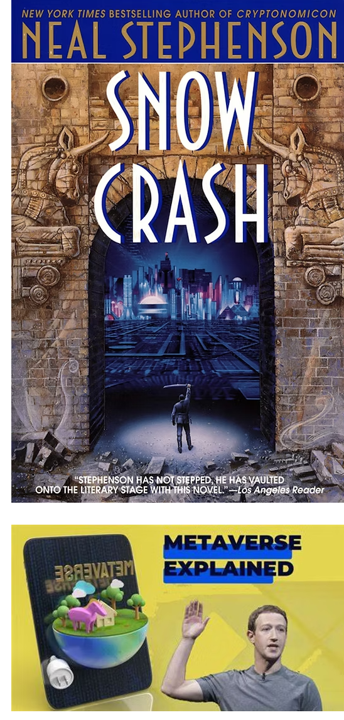The Future Wasn't Meant to Be

Explore the following futuristic technologies that failed to be widely adopted. What prevented their success, and is there a situation in the future where they might find popularity?
Rocket mail is the delivery of mail by rocket or missile. The rocket lands by deploying an internal parachute upon arrival. It has been attempted by various organizations in many countries, with varying levels of success. It has never become widely seen as being a viable option for delivering mail, due to the cost of the schemes and numerous failures. The collection of philatelic material ("stamps") used for (and depicting) rocket mail is part of a specialist branch of aerophilately known as astrophilately.
The earliest type of the rocket mail was parchment wrapped around an arrow, but the modern version was created by Heinrich von Kleist in 1810. Back then rockets relied on gunpowder and were used as artillery, so despite its speed, they were unreliable and dismissed. However, in 1927, Hermann Julius Oberth revisited this topic (photo of the right), lecturing about how rockets can be used to deliver mail. Oberth's lecture caught the attention of Friedrich Schiemdl, who lived in the Austrian Alps. He launched the first rocket mail to deliver letters to a place 5 kilometers away. Other countries were inspired to utilize rockets to deliver mail, and it was largely successful in India.


Things didn’t really take off in the US until 1959, when the Post Office Department fired a Regulus cruise missile with its nuclear warhead replaced by two mail containers, towards a Naval Station in Mayport, Florida. The 13,000-pound missile lifted off with 3,000 letters and twenty-two minutes later struck the target at Mayport, 700 miles away. The letters were retrieved, stamped and circulated as usual. The successful delivery of the mails prompted Postmaster Summerfield to enthusiastically declare that “before man reaches the moon, mail will be delivered within hours from New York to California, to Britain, to India or Australia by guided missiles.” But it was not to be. The cost of rocket mail was too high—that little experiment with the Regulus cruise missile cost the US government $1 million but generated only $240 in revenue by sale of postage stamps. Neither the Post Office nor the Department of Defense could justify the cost of using missile mail, especially when airplanes were already making mail deliveries across the world in a single night at the fraction of a cost.
A flying car or roadable aircraft is a type of vehicle which can function both as a road vehicle and as an aircraft. As used here, this includes vehicles which drive as motorcycles when on the road. The term "flying car" is also sometimes used to include hovercars and/or VTOL (vertically take off and landing) personal air vehicles. Many prototypes have been built since the early 20th century, using a variety of flight technologies. Most have been designed to take off and land conventionally using a runway. Although VTOL projects are increasing, none has yet been built in more than a handful of numbers. Their appearance is often predicted by futurologists, and many concept designs have been promoted. Their failure to become a practical reality has led to the catchphrase "Where's my flying car?", as a paradigm for the failure of predicted technologies to appear. Flying cars are also a popular theme in fantasy and science fiction stories. One of the most notable appearances in pop culture is the Delorean from the movie franchise "Back to the Future".
In June 2023, California corporation Alef Aeronautics revealed its flying car “Model A" was granted legal permission from the Federal Aviation Administration to test run the vehicle on the road and in the sky − a move needed before it can be released to the public. Alef is the first company to receive a Special Airworthiness Certification from the FAA and the car is 100% electric. Pre-order has already started at $299,999 and $1500 to enter the priority queue.


Maglev (derived from magnetic levitation) is a system of rail transport whose rolling stock is levitated by electromagnets rather than rolled on wheels, eliminating rolling resistance. Compared to conventional railways, maglev trains can have higher top speeds, superior acceleration and deceleration, lower maintenance costs, improved gradient handling, and lower noise. However, they are more expensive to build, cannot use existing infrastructure, and use more energy at high speeds.
The train speed record of 603 km/h (375 mph) was set by the experimental Japanese L0 Series maglev in 2015. From 2002 until 2021, the record for the highest operational speed of a passenger train of 431 kilometres per hour (268 mph) was held by the Shanghai maglev train, which uses German Transrapid technology. The service connects Shanghai Pudong International Airport and the outskirts of central Pudong, Shanghai. At its historical top speed, it covered the distance of 30.5 kilometres (19 mi) in just over 8 minutes. Despite over a century of research and development, there are only seven operational maglev trains today — four in China, two in South Korea, and one in Japan.


A Zeppelin is a type of rigid airship named after the German inventor Ferdinand von Zeppelin who pioneered rigid airship development at the beginning of the 20th century. Zeppelin's notions were first formulated in 1874 and developed in detail in 1893. They were patented in Germany in 1895 and in the United States in 1899. After the outstanding success of the Zeppelin design, the word zeppelin came to be commonly used to refer to all forms of rigid airships. Zeppelins were first flown commercially in 1910 by Deutsche Luftschiffahrts-AG (DELAG), the world's first airline in revenue service. By mid-1914, DELAG had carried over 10,000 fare-paying passengers on over 1,500 flights. During World War I, the German military made extensive use of Zeppelins as bombers and as scouts. Numerous bombing raids on Britain resulted in over 500 deaths.

The defeat of Germany in 1918 temporarily slowed the airship business. An exception was made to allow the construction of one airship for the United States Navy, the order for which saved the company from extinction. The spire of the Empire State Building was originally designed to serve as a mooring mast for Zeppelins and other airships, although it was found that high winds made that impossible and the plan was abandoned. The Hindenburg disaster in 1937, along with political and economic developments in Germany in the lead-up to World War II, hastened the demise of airships.

The British engineer Henry Robinson Palmer (1795–1844) filed a patent application for a horse-drawn suspended single-rail system in 1821, and constructed a demonstration at Woolwich Arsenal, in England soon afterwards. The first suspended railway was opened at Cheshunt, England, United Kingdom on 25 June 1825, using Palmer's patent. It was built to carry bricks, but as an opening stunt it carried passengers. Since then, suspension railways have been developed in many countries around the world including China, Russia, US, Germany, Japan and France.
A suspension railway is a form of elevated monorail in which the vehicle is suspended from a fixed track (as opposed to a cable used in aerial tramways), which is built above streets, waterways, or existing railway track.
Aside from a multitude of indoor uses in factories, suspended railways are also used for number of outdoor applications other than passenger transportation. In the 1920s the Port of Hamburg used a petrol powered, suspended monorail to transport luggage and freight from ocean-going vessels to a passenger depot. Very small and light weight systems have been used widely on farms to transport crops such as bananas. In the mining industry suspended monorails have been used because of their ability to descend and climb steep tunnels using rack and pinion drive. This significantly reduces cost and length of tunnels, by up to 60% in some cases, which otherwise must be at gentle gradients to suit road vehicles or conventional railways.


A ground-effect vehicle (GEV), also called a wing-in-ground-effect (WIGE or WIG), ground-effect craft/machine (GEM), wingship, flarecraft, surface effect vehicle or ekranoplan, is a vehicle that is able to move over the surface by gaining support from the reactions of the air against the surface of the earth or water. Typically, it is designed to glide over a level surface (usually over the sea) by making use of ground effect, the aerodynamic interaction between the moving wing and the surface below. Some models can operate over any flat area such as frozen lakes or flat plains similar to a hovercraft. The term Ground-Effect Vehicle originally referred to any craft utilizing ground effect, including what is known later as hovercraft, in descriptions of patents during the 1950s. However, this term is nowadays regarded as distinct from air-cushion vehicles or hovercraft. The definition of GEVs does not include racecars utilizing ground-effect for increasing downforce.
A ground-effect vehicle needs some forward velocity to produce lift dynamically, and the principal benefit of operating a wing in ground effect is to reduce its lift-dependent drag. The basic design principle is that the closer the wing operates to an external surface such as the ground, when it is said to be in ground effect, the less drag it experiences.
In 2021 Brittany Ferries announced that they were looking into using REGENT (Regional Electric Ground Effect Naval Transport) ground effect craft "seagliders" for cross English Channel services. Southern Airways Express also placed firm orders for seagliders with intent to operate them along Florida's east coast. Around mid-2022, the US Defense Advanced Research Projects Agency (DARPA) launched its Liberty Lifter project, with the goal of creating a low-cost seaplane that would use the ground-effect to extend its range. The program aims to carry 90 tons over 6,500 nautical miles (12,000 km), operate at sea without ground-based maintenance, all using low-cost materials.

Unlike other technologies discussed in this section, this one has been done! A supersonic transport (SST) or a supersonic airliner is a civilian supersonic aircraft designed to transport passengers at speeds greater than the speed of sound. To date, the only SSTs to see regular service have been Concorde and the Tupolev Tu-144. The last passenger flight of the Tu-144 was in June 1978 and it was last flown in 1999 by NASA. Concorde's last commercial flight was in October 2003, with a November 26, 2003 ferry flight being its last airborne operation. Following the permanent cessation of flying by Concorde,
there are no remaining SSTs in commercial service. Several companies have each proposed a supersonic business jet, which may bring supersonic transport back again.
The most famous example is the Concorde. Concorde only sold to British Airways and Air France, with subsidized purchases that were to return 80% of the profits to the government. In practice for almost all of the length of the arrangement, there was no profit to be shared. After Concorde was privatized, cost reduction measures and ticket price raises led to substantial profits. Since Concorde stopped flying, it has been revealed that over the life of Concorde, the plane did prove profitable, at least to British Airways. Concorde operating costs over nearly 28 years of operation were approximately £1 billion, with revenues of £1.75 billion.
Two main environmental concerns plague SST: sound/noise pollution and air pollution. The SST was seen as particularly offensive due to its sonic boom and the potential for its engine exhaust to damage the ozone layer. Some evidence even suggests that the slowing down in climate change was due to the ending of supersonic flights which was measured by Stratospheric Water Vapor levels in the 1980s and 1990s were higher than that in the 2000s. When it comes to public policy, the FAA prohibits commercial airplanes from flying at supersonic speeds above sovereign land governed by the United States because of the negative impact the sonic boom brings to humans and animal populations below.
Nevertheless, new plans are being drawn up. The idea of 3 hours to fly across the Pacific and just 2 over the Atlantic, making global flight into a daytrip is still something that entices consumers and airlines. United Airlines Wants to Bring Back Supersonic Air Travel. They plan to buy planes from Boom Supersonic, a start-up, could become the first to offer ultrafast commercial flights since the Concorde stopped flying in 2003.
Nuclear propulsion includes a wide variety of propulsion methods that use some form of nuclear reaction as their primary power source. The idea of using nuclear material for propulsion dates back to the beginning of the 20th century. In 1903 it was hypothesized that radioactive material, radium, might be a suitable fuel for engines to propel cars, planes, and boats. H. G. Wells picked up this idea in his 1914 fiction work The World Set Free. Many aircraft carriers and submarines currently use uranium fueled nuclear reactors that can provide propulsion for long periods without refueling. There are also applications in the space sector with nuclear thermal and nuclear
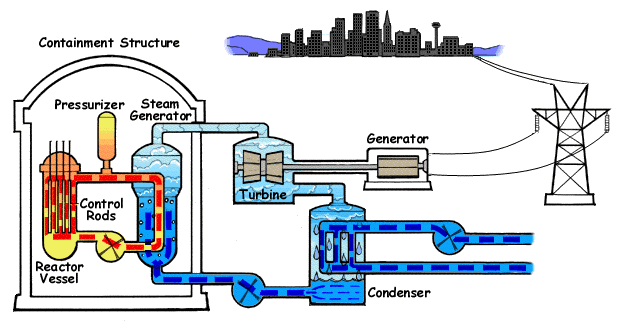

electric engines which could be more efficient than conventional rocket engines. Nuclear-powered vessels are mainly military submarines, and aircraft carriers. Russia is the only country that currently has nuclear-powered civilian surface ships, mainly icebreakers.
The idea of making cars that used radioactive material, radium, for fuel dates back to at least 1903. Analysis of the concept in 1937 indicated that the driver of such a vehicle might need a 50-ton lead barrier to shield them from radiation. Ford made another potentially nuclear-powered model in 1962 for the Seattle World's Fair, the Ford Seattle-ite XXI. This also never went beyond the initial concept. In 2009, for the hundredth anniversary of General Motors' acquisition of Cadillac, Loren Kulesus created concept art depicting a car powered by thorium

Hyperloop is a proposed high-speed transportation system for both passengers and freight. The concept was documented by Elon Musk in a 2013 white paper, where the hyperloop was described as a transportation system using capsules supported by an air-bearing surface within a low-pressure tube. Hyperloop systems have three essential elements: tubes, pods, and terminals. The tube is a large, sealed low-pressure system (typically a long tunnel). The pod is a coach at atmospheric pressure that experiences low air resistance or friction inside the tube using magnetic propulsion (in the initial design, augmented by a ducted fan). The terminal handles pod arrivals and departures.
The hyperloop concept has been promoted by Musk and SpaceX, and other companies or organizations were encouraged to collaborate in developing the technology. A Technical University of Munich hyperloop set a speed record of 463 km/h (288 mph) in July 2019 at the pod design competition hosted by SpaceX in Hawthorne, California. Virgin Hyperloop conducted the first human trial in November 2020 at its test site in Las
Vegas, reaching a top speed of 172 km/h (107 mph). Swisspod Technologies unveiled a 1:12 scale testing facility in a circular shape to simulate an "infinite" hyperloop trajectory in July 2021 on the EPFL campus at Lausanne, Switzerland. In 2023, a new European effort to standardize "hyperloop systems" released a draft standard. Hyperloop One, one of the best well-known and well-funded players in the hyperloop space, declared bankruptcy and ceased operations in 2023. Other companies continue to pursue hyperloop technology development.
Another possible idea was to build hyperloop on Mars. According to Musk, hyperloop would be useful on Mars as no tubes would be needed because Mars' atmosphere is about 1% the density of the Earth's at sea level. For the hyperloop concept to work on Earth, low-pressure tubes are required to reduce air resistance. However, if they were to be built on Mars, the lower air resistance would allow a hyperloop to be created with no tube, only a track, and so would be just a magnetically levitating train. Four competitions have been held including one at SpaceX for students and non-students, since 2015, and some are still active, while others have given up or transferred their tech to other forms of transportation.
Despite its support from people such as Musk, there are critics that claim it is dangerous and unsuitable. YouTube creator Adam Kovacs has described Hyperloop as a kind of gadgetbahn because it would be an expensive, unproven system that is no better than existing technology like traditional high-speed rail. Some critics of Hyperloop focus on the experience—possibly unpleasant and frightening—of riding in a narrow, sealed, windowless capsule inside a sealed steel tunnel, that is subjected to significant acceleration forces; high noise levels due to air being compressed and ducted around the capsule at near-sonic speeds; and the vibration and jostling. This is in addition to practical and logistical questions regarding how to best deal with safety issues such as equipment malfunction, accidents, and emergency evacuations.
Hydrogen vehicles include some road vehicles, rail vehicles, space rockets, forklifts, ships and aircraft. Motive power is generated by converting the chemical energy of hydrogen to mechanical energy, either by reacting hydrogen with oxygen in a fuel cell to power electric motors or, less commonly, by hydrogen internal combustion.
Hydrogen burns cleaner than fuels such as gasoline or methane but is more difficult to store and transport because of the small size of the molecule. As of the 2020s hydrogen light duty vehicles, including passenger cars, have been sold in small numbers due to competition with battery electric vehicles. As of 2021, there were two models of hydrogen cars publicly available in select markets: the Toyota Mirai (2014–), the first commercially produced dedicated fuel cell electric vehicle (FCEV), and the Hyundai Nexo (2018–).
As of 2019, 98% of hydrogen is produced by steam methane reforming, which emits carbon dioxide. It can be produced by electrolysis of water, or by thermochemical or pyrolytic means using renewable feedstocks, but the processes are currently expensive. Various technologies are being developed that aim to deliver costs low enough, and quantities great enough, to compete with hydrogen production using natural gas.
Vehicles running on hydrogen technology benefit from a long range on a single refuelling, but are subject to several drawbacks including high carbon emissions when hydrogen is produced from natural gas, capital cost burden, high energy inputs in production and transportation, low energy content per unit volume at ambient

conditions, production and compression of hydrogen, the investment required to build refuelling infrastructure around the world to dispense hydrogen. In addition, leaked hydrogen is an invisible, highly flammable gas and has a global warming effect 11.6 times stronger than CO₂.
Critics argue that implementing wide-scale use of hydrogen in cars is unlikely during at least the next several decades and that the hydrogen car is a dangerous distraction from more readily available solutions to reducing the use of fossil fuels in vehicles. Former U.S. Department of Energy official Joseph Romm has said: "A hydrogen car is one of the least efficient, most expensive ways to reduce greenhouse gases." He argued that the cost to build out a nationwide network of hydrogen refueling stations would be prohibitive.
.jpg)
In science fiction, mecha (Japanese: メカ, Hepburn: meka) or mechs are giant robots or machines, typically depicted as piloted, humanoid walking vehicles. The term was first used in Japanese after shortening the English loanword 'mechanism' (メカニズム, mekanizumu) or 'mechanical' (メカニカル, mekanikaru), but the meaning in Japanese is more inclusive, and 'robot' (ロボット, robotto) or 'giant robot' is the narrower term.
There are a few real prototypes of mecha-like vehicles. Currently almost all of these are highly specialized or just for concept purpose, and as such may not see mass production. Most of these experimental projects were made and first presented in East Asia. In 2012, Suidobashi Heavy Industry unveiled their prototype of a driveable mecha, the Kuratas. In 2017, Canadian engineering company, Furrion Exo-Bionics, unveiled Prosthesis: The Anti-Robot, invented by Jonathan Tippett, as the company's flagship prototype mech. It is a 3500 kg, 200 hp, electric powered, 4-legged, all-terrain walking mech intended for use in competitive sport. It is controlled by the human pilot inside via a full-body exo-skeletal interface. In 2020 it was awarded the Guinness World Record as "the world's largest tetrapod exoskeleton".
The metaverse is a loosely defined term referring to virtual worlds in which users represented by avatars interact, usually in 3D and usually focused on social and economic connection. The term metaverse originated in the 1992 science fiction novel Snow Crash as a portmanteau of "meta" and "universe". In Snow Crash, the metaverse is envisioned as a hypothetical iteration of the Internet as a single, universal, and immersive virtual world that is facilitated by the use of virtual reality (VR) and augmented reality (AR) headsets.
The term "metaverse" is often linked to virtual reality technology, and beginning in the early 2020s, with Web3.0. The term has been used as a buzzword by companies to exaggerate the development progress of various related technologies and projects for public relations purposes. Information privacy, user addiction, and user safety are concerns within the metaverse, stemming from challenges facing the social media and video game industries as a whole.
Popular games described as part of the metaverse include Habbo Hotel, World of Warcraft, Minecraft, Fortnite, VRChat, and game creation platform Roblox. In 2017, Microsoft acquired the VR company AltspaceVR, and has since implemented virtual avatars and meetings held in virtual reality into Microsoft Teams. In 2019, the social network company Facebook launched a social VR world called Facebook Horizon. In 2021, the company was renamed "Meta Platforms" and its chairman Mark Zuckerberg declared a company commitment to developing a metaverse.
Reality or marketing gimmick? In a February 2022 article for The New York Times, Lauren Jackson argued that the metaverse is "stalled from achieving scale by a lack of infrastructure for both hardware and software, a monopolistic approach to platform development, and a lack of clear governance standards." In December 2021, Raja Koduri, senior vice president of Intel, claimed that "Truly persistent and immersive computing, at scale and accessible by billions of humans in real time, will require even more: a 1,000-times increase in computational efficiency from today's state of the art." In an article for The New York Times on October 26, 2022, Ryan Mac, a technology reporter, claimed that for the past year, Mark Zuckerberg has struggled to find the best way to achieve the metaverse without success yet.
For many, the 1990s were an unabashedly optimistic time; the academic Francis Fukuyama infamously suggested we might have reached the end of history, or at least the end of conflicts between dictatorships and democracies. This optimism extended beyond political and academic circles into popular culture. Review the following artworks, then discuss with your team: what kind of excitement did they reflect for the upcoming century? Were they justified?
Wind of Change” is speaking to the ‘changing’ political climate in a particular country. And for logical reasons, most of fandom has concluded that said nation is actually Germany. In fact in the aftermath of the infamous Berlin Wall being demolished in November of 1989, many people unofficially adopted this song as an anthem celebrating that reality. This song is actually set in is Russia. For Moskva is actually a colloquial synonym (in the Western world) for Moscow. And more specifically, this track centers on the fall of the Soviet Union, with 1989 also being integral in the history of that movement. Moreover the event they are referring to throughout, which has them going “down to Gorky Park”, was actually a historical concert held in Moscow during August of 1989 that the Scorpions co-headlined. Indeed the Moscow Music Peace Festival, which occurred at a time when the country was less inclined to entertain Western influences, is considered to be one of the key developments which symbolized the fall of the Soviet Union.
"Right Here, Right Now" is a song by British alternative rock band Jesus Jones from their second studio album, Doubt (1991). The song was inspired by the Revolutions of 1989 in Europe, particularly Perestroika in the Soviet Union. Mike Edwards has said that some of the lyrics were influenced by the band's experiences playing in Romania in February 1990 shortly after the overthrow of Nicolae Ceaușescu. The lyrics were also inspired by the 1987 Prince song "Sign o' the Times" and a 1989 cover version of it by Simple Minds, which the members of Jesus Jones had first heard during television coverage of the fall of the Berlin Wall.




"Heal the World" is a song recorded from Michael Jackson's eighth studio album, Dangerous (1991). It was written and composed by Jackson and filled with antiwar lyrics and Jackson's wish for the humanity of making the world a better place. In a 2001 Internet chat with fans, Jackson said that "Heal the World" is the song he was most proud to have created. He also created the Heal the World Foundation, a charitable organization which was designed to improve the lives of children.

"Will 2K" is the second single taken from American rapper Will Smith's second studio album, Willennium (1999) and is about humanity reaching the millennium, as it was launched in November of 1999. The music video features many celebrities all celebrating the arrival of 2000 from various cities across the world. This work coincided with Will Smith's humorous adventurous, futuristic movie series Men in Black featuring alien conspiracy by the government.

Here it comes the party of a lifetime
31st of December
Man I remember when the ball dropped for 90
Now it's 9-9, ten years behind me
What's gonna happen?
Don't nobody know
We'll see when the clock gets to 12-0-0
Chaos, the cops gonna block the street
Man who the hell cares?
Just don't stop the beat
No time to sleep, yo it's on tonight
K-Ci you feeling me right? (Yeah)
2-0-0-0, the Will 2 K
The new millennium, yo excuse me Willennium (yeah)
It can't get thicker than this (Big Will)
Slick like Rick I can't miss
(And we gonna party like it's 19)
Hold up it is
The New Age movement of the late 20th century represents a revival in the interest of occult and metaphysical ideas, with many of its practitioners very much into love, harmony, and personal transformation and healing. Explore the following works associated with the movement, and discuss with your team: do such messages still resonate today?

Journey in Satchidananda is the fourth studio album by American jazz pianist and harpist Alice Coltrane, released in February 1971 on Impulse! Records. The album's title and title track reflect the influence of Swami Satchidananda Saraswati, a yoga guru and religious leader, whom Coltrane had studied under and become close to. Despite being one of the most pioneering jazz musicians of her generation, she never gained the dizzying notoriety of her husband, John Coltrane, whose legacy continues to overshadow the work of his beloved wife. For this reason and more, her albums are surrounded with a distinctly private aura, a tranquillity that is at its most abundant in her fourth solo album, released four years after her husband’s death in 1967. Bending modal jazz, African Indian blues, Indian classical, and Middle Eastern music, all stitched together with flourishes of jazz harp, Journey in Satchidananda sounds like nothing else released in the 1970s.
Evangelos Odysseas Papathanassiou (29 March 1943 – 17 May 2022), known professionally as Vangelis was a Greek musician, composer, and producer of electronic, progressive, ambient, and classical orchestral music. The Unknown Man is part of a concept album named Spiral, thematically inspired by ancient Tao philosophy, exploring the nature of the universe moving in spirals. On the front cover is cited Tao Te Ching: "Going on means going far – Going far means returning", while the sleeve notes state that the track "Dervish D" is "inspired by the Dervish dancer who by his whirling realises the spiralling of the universe". Vangelis himself designed the cover artwork.
Having had a career in music spanning over 50 years and having composed and performed more than 50 albums, Vangelis is one of the most important figures in the history of electronic music,and modern film music. He used many electronic instruments in a fashion of a "one-man quasi-classical orchestra" composing and performing on the first take.
Masanori Takahashi (高橋 正則, born February 4, 1953), professionally known as Kitarō (喜多郎), is a Japanese musician, composer, record producer, and arranger noted for his electronic-instrumental music, and is often associated with and regarded as one of the most prominent musical acts of new-age music. He won the Grammy Award for Best New Age Album for Thinking of You (1999), with a record 16 nominations in the same category. He received a Golden Globe Award for the original score to Heaven & Earth (1993).


.jpg)
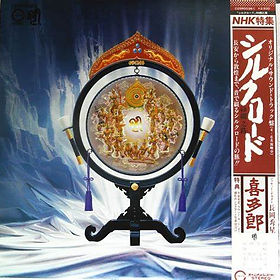
The music in Kitaro's Silk Road project blends his influences from traditional Japanese music and the romantic western tradition. Critics rave his style is the epitome of the contemplative, highly melodic synthesizer music. The song is the theme song for the NHK Tokushu documentary series The Silk Road: The Rise and Fall oif Civilizations.
"Caribbean Blue" is a song by Irish musician Enya, included as the second track on her third studio album, Shepherd Moons (1991). It follows a waltz time signature, and mentions the Anemoi (Ancient Greek wind gods): Boreas, Afer Ventus (Africus), Eurus, and Zephyrus. The song was released as the lead single from the album on 7 October 1991 by WEA. In the song, the singer 'avoids repeating the successful formula of "Orinoco Flow" by means of its waltz time—a subtle enough change, but one that colors and drives the overall composition and performance, the closest Enya might ever get to a dance number.'


"Return to Innocence" is a song by German musical group Enigma, released in December 1993 by Virgin as the lead single from the group's second album, The Cross of Changes (1993).] Hailing from Taiwan, these Amis musicians were in a cultural exchange program in Paris in 1988 when their performance of the song was recorded by the Maison des Cultures du Monde and later
distributed on CD.The song's melodic and talking vocals in English are provided by Angel X (Andreas Harde), and a short talking vocal by Sandra ("That's not the beginning of the end, that's the return to yourself, the return to innocence"), while an Amis chant ("Weeding and Paddyfield Song No. 1") sung by folk music duo Difang and Igay Duana opens the song and is repeated throughout. The song was used to promote several types of media in the mid-1990s, including film and TV commercials. In autumn 1994, the song was featured in an episode of the TV show My So-Called Life. In 1995, the song was used as the closing theme in Disney's live-action film Man of the House, as well as in the opening and closing of an Outer Limits episode. In 1996, the song was further popularised when it was used in a television advertisement to promote the 1996 Summer Olympics.


